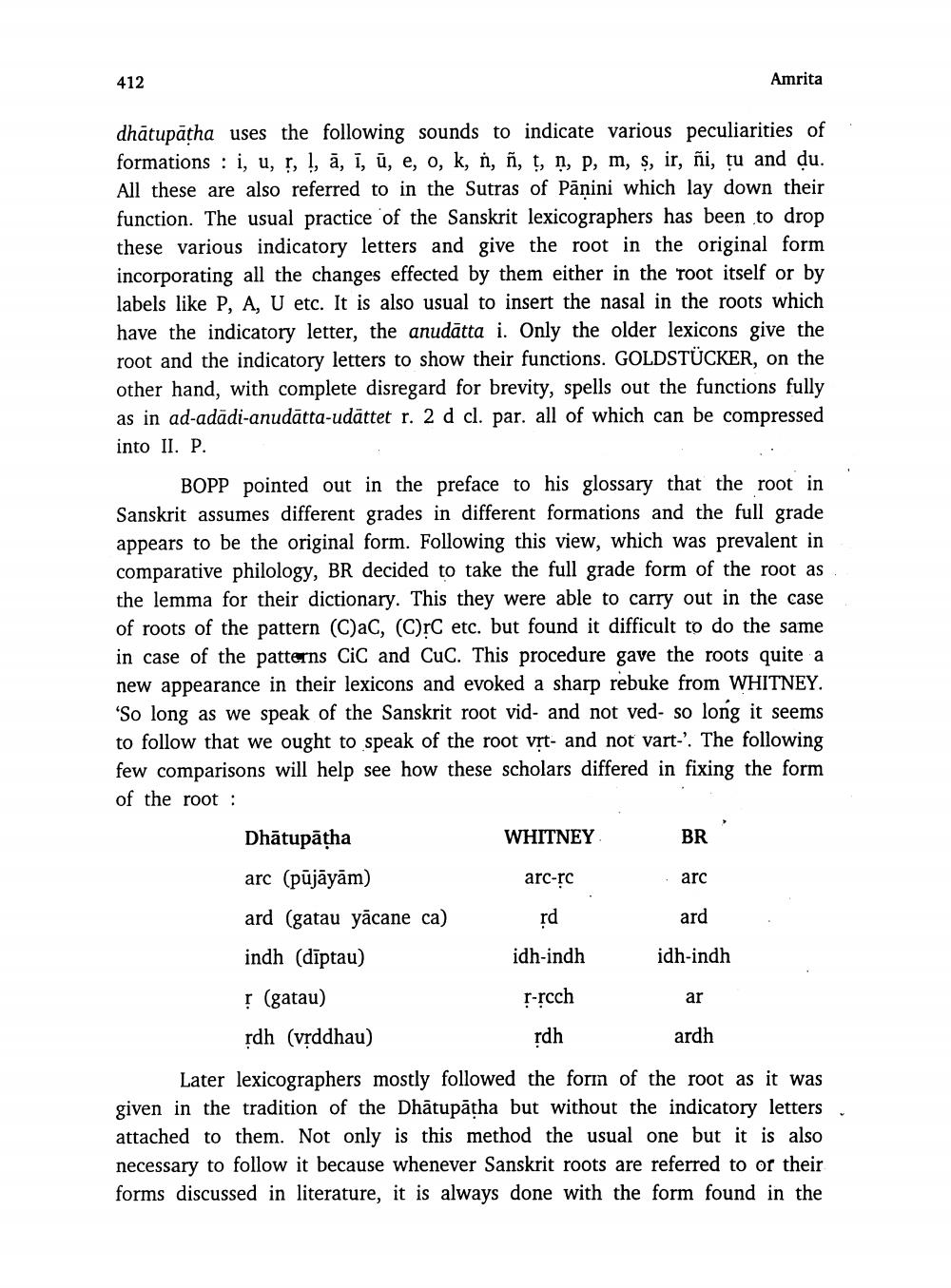________________
412
Amrita
dhātupātha uses the following sounds to indicate various peculiarities of formations : i, u, ļ, !, ā, ī, ū, e, o, k, n, ñ, ț, n, p, m, ș, ir, ñi, şu and du. All these are also referred to in the Sutras of Pāņini which lay down their function. The usual practice of the Sanskrit lexicographers has been to drop these various indicatory letters and give the root in the original form incorporating all the changes effected by them either in the root itself or by labels like P, A, U etc. It is also usual to insert the nasal in the roots which have the indicatory letter, the anudātta i. Only the older lexicons give the root and the indicatory letters to show their functions. GOLDSTÜCKER, on the other hand, with complete disregard for brevity, spells out the functions fully as in ad-adādi-anudātta-udāttet r. 2 d cl. par. all of which can be compressed into II. P.
BOPP pointed out in the preface to his glossary that the root in Sanskrit assumes different grades in different formations and the full grade appears to be the original form. Following this view, which was prevalent in comparative philology, BR decided to take the full grade form of the root as the lemma for their dictionary. This they were able to carry out in the case of roots of the pattern (C)aC, (C)rC etc. but found it difficult to do the same in case of the patterns CiC and Cuc. This procedure gave the roots quite a new appearance in their lexicons and evoked a sharp rebuke from WHITNEY. 'So long as we speak of the Sanskrit root vid- and not ved- so long it seems to follow that we ought to speak of the root vrt- and not vart-?. The following few comparisons will help see how these scholars differed in fixing the form of the root : Dhātupātha
WHITNEY BR arc (pūjāyām)
arc-rc
arc ard (gatau yācane ca)
ard indh (dīptau)
idh-indh idh-indh
rd
r-rcch
ar
; (gatau) rdh (vrddhau)
rdh
ardh
Later lexicographers mostly followed the form of the root as it was given in the tradition of the Dhātupātha but without the indicatory letters attached to them. Not only is this method the usual one but it is also necessary to follow it because whenever Sanskrit roots are referred to or their forms discussed in literature, it is always done with the form found in the




